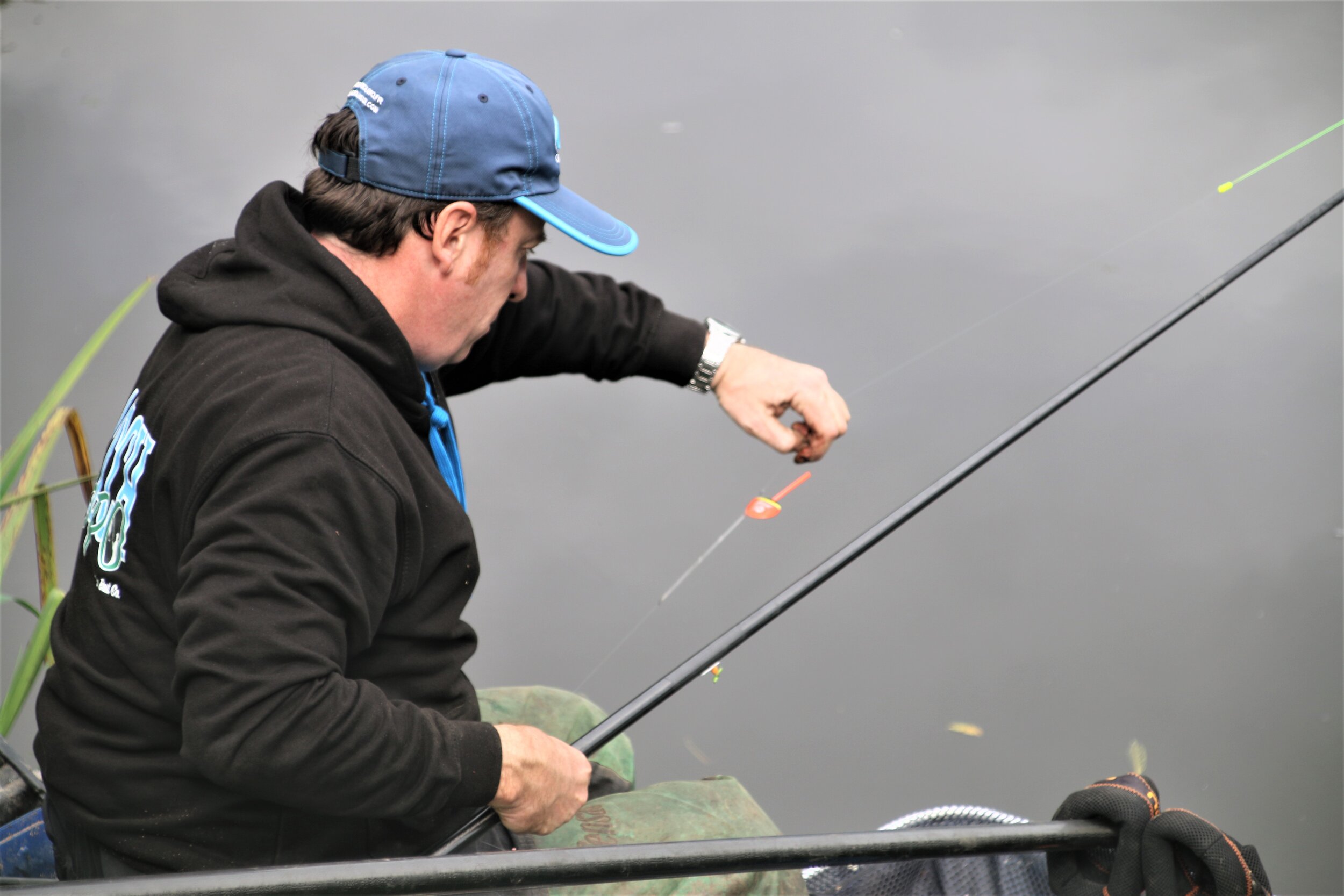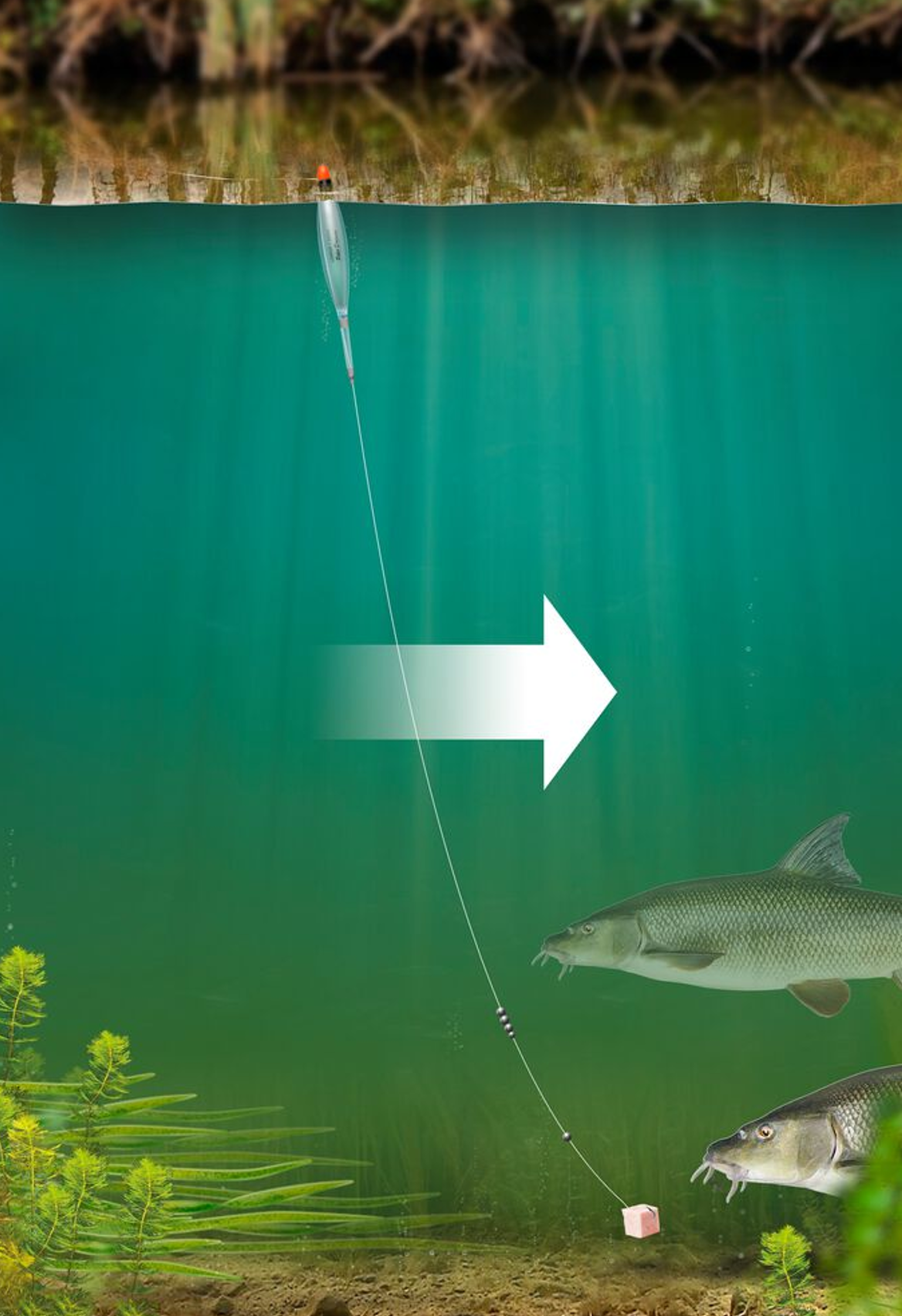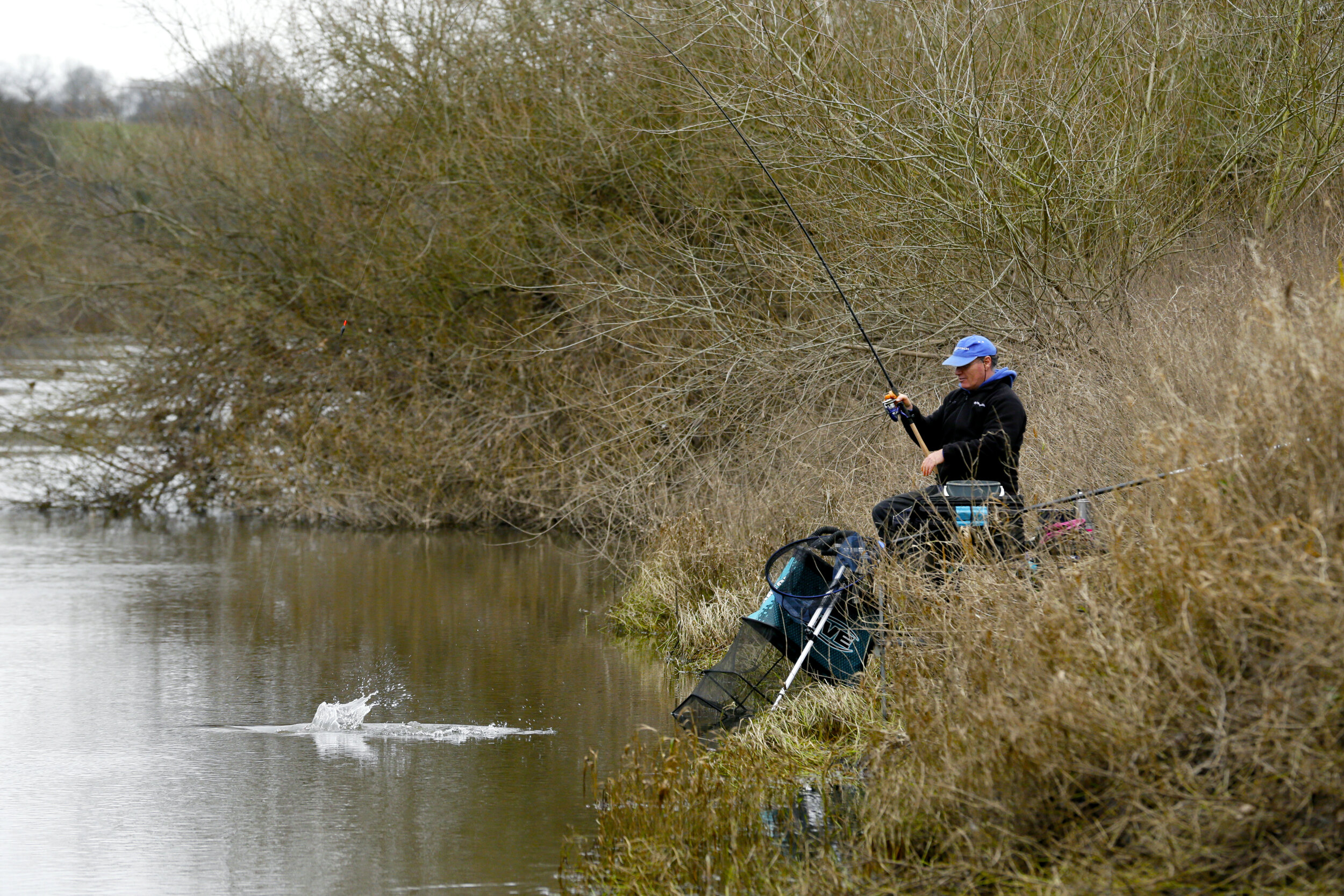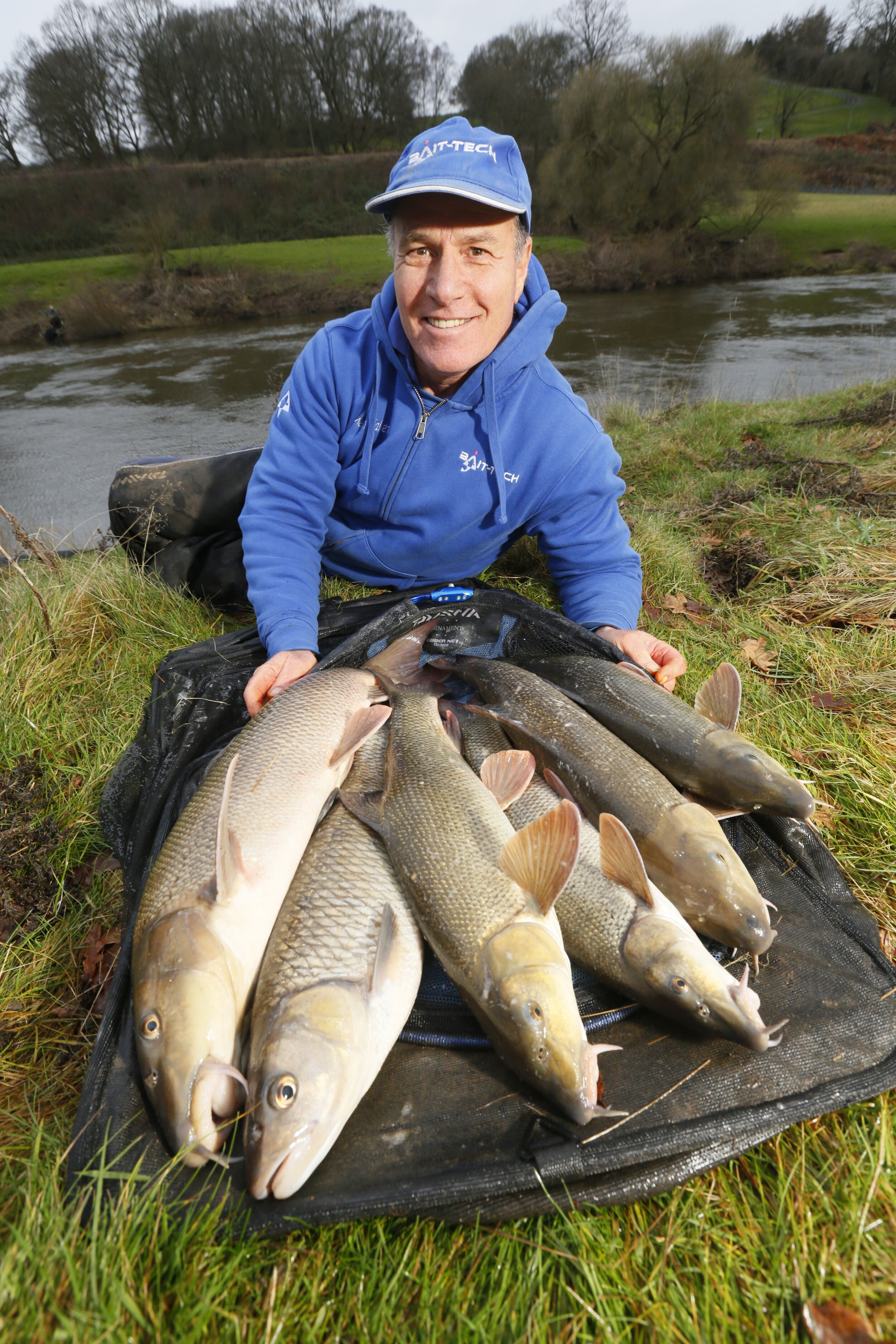Commercial Fishing Tips | Sort your shotting with Steve Ringer
Shotting patterns – now there’s a topic you could argue about long into the night! What’s best for deep-water bream? What about the margins, or fishing up to an island?
I get asked questions about this a lot and it’s always hard to answer because the key lies in responding and altering your shotting to how the fish are feeding.
Some days, a straight bulk and two droppers pattern will be best while on others, spreading the shot out for a slower fall catches more. There’s no right and wrong answer and my biggest bit of advice would be to experiment. If you’re not catching as well as you’d like, slide the shot about to see if it makes a difference!
That said, for much of my fishing, whether on a commercial carp fishery or an Irish lough, I have two patterns that have served me well for years – the strung bulk and the straight bulk. I love using a strung bulk due to its versatility, as it allows me to change from quite a positive way of presenting the bait to a more refined one simply by moving the shots further apart.
The key lies in responding and altering your shotting to how the fish are feeding
Tailor your weights
For floats of 1g and upwards, use an olivette and below this, shot. A 0.8g float may seem to need too many shot and risk tangles, but that won’t happen if you use bigger-sized shot.
For floats of 1g and upwards, use an olivette
Shot sizes to use
When using rigs of 0.6g to 0.8g I’ll use No8 and No9 shot. For rigs below 0.6g I’ll use No10 and occasionally No9s. Lighter floats let you present the bait falling more slowly through the water.
Carry a variety of shot with you
Versatile pattern
I rate a strung bulk pattern. This consists of shot spaced 1ins apart in the bottom half of the rig. I space the shots further apart for a slower fall of the bait or create a bulk if I need it to get down quickly.
Strung shotting aids a slow fall of the hookbait
A solid bulk
Solid bulks tend to be an olivette for bream rigs, and are fished with two or three dropper shot below it. If I’ve got only shot on the line, I’ll group it together for fishing in the margins.
A bulk will help get the bait down quick for species like bream
River Fishing Tips | How to stop bumping off roach on the float - Hadrian Whittle
The most common cause of bumping fish on a running line is allowing a bow to form between the rod-tip and the float, so when you strike, you’re not direct enough to the float and the fish aren’t hooked properly.
Longer rods and silicone line spray on your reel can help solve this.
Another issue could be hook size. Try going up one size, a 16 for double maggot and an 18 for single, for example.
Soft, tip-actioned rods are vital for roach.
Learn the perfect roach stick float rig by clicking here.
River Fishing Tips | Get the most out of the flat float with Steve Maher
The flat float first gained popularity in the UK off the back of England’s World Champs win in Paris back in 2001, when massive disc-shaped floats taking up to 40g of weight were used to catch eels on the River Seine.
Slowly, anglers on home soil began to cotton on to the effectiveness of these unusual bits of kit that were brilliant for slowing a hookbait down to a virtual standstill, even on the most powerful rivers.
Now, almost 20 years on, if you watch a match on a river that’s carrying a little bit of extra water, you’ll see plenty of flatties set up and ready to go.
The flat float is brilliant for slowing the hook bait to a standstill on even the most powerful of rivers
But there’s more versatility to the flat float than it being just for flood conditions. On a medium-paced river like my local River Severn around Bewdley and Stourport, the float is ideal for catching perch, bream and skimmers. These species much prefer a bait that’s stood still or only just moving through the swim, the type of presentation you can’t get by using classic round-bodied pole floats.
Perch are a great target with a flattie
The flat float works by the thin circular-shaped body turning thin side on into the flow when lowered into the water. This means that there’s far less body surface area for the current to get hold of which, with a normal-bodied float, would pull the rest of the rig and the bait off bottom because the float wouldn’t sit straight. This doesn’t happen with a flat float.
Originally, this float was designed to nail a bait totally still on the bottom, but where perch are concerned, I’ve found that letting the bait run slightly can get more bites. The process here is to lower the rig in and then hold it still for 10 seconds, keeping the line from the pole to the float tight. Then lift the pole-tip and let the float travel through the swim, only for about four or five inches, and then hold it still again. Repeat this process until you reach the end of the swim.
Fishing well overdepth is the norm for flat float work and it’s possible to have up to 2ft of line laid on the riverbed at times.
Experimentation is key, and fishing with the bait just touching bottom can get better results on some days. I begin by fishing around the length of the float overdepth and make adjustments from there.
Experimenting with the depth is key to success on the flat float
Shotting a flat float is also easy and, if anything, I like to fish with the float overshotted (carrying too much weight).
For a 3g float, I’ll use perhaps 3.25g. I know that this means the float will sink, but because you’re holding the rig still a lot of the time and only letting it run down the peg a few inches at a time, that doesn’t matter.
Overshotting the float also makes bite indication brilliant!
Here are my six top tips for flat float fishing…
Delicate flat float
As well as a standard 4g Sensas Stach I also use a 2g Sensas Pawe – more delicate, with a thinner tip and the use of smaller dropper shot.
Change your hooks
If you catch a lot of perch, your hook can blunt. If I lose a run of fish, I change the hook! My favourite is the Tubertini Series 18 in a size 16.
Go past the feed
Sometimes the fish can be fussy and won’t sit right over the feed. When I get a lot of small indications but no proper bites, I’ll add a 0.5m extension.
Different baits
Worms are unbeatable for perch, but if I feel there’s a chance of skimmers or bream, I’ll always use dead fluoro pink maggots.
Groundbait
I will always feed groundbait at the start. I use eight balls of ABC Baits River and Roach, holding hemp and dead maggots to draw in prey fish
Give them maggots!
I will also feed maggots and chopped worm with a bait dropper. The worm needs to be finely chopped so it doesn’t fill the fish up.
River Fishing Tips | What does it mean when fish cough up bait? - Darren Cox
Greedy species like perch and chub tend to regurgitate bait the most, but I’ve had roach and dace do it too.
When it happens, it tells me two things…
Firstly, that the fish are ravenous and eating well and secondly, that there may not be that many fish in the peg as the ones I catch are eating everything I’ve fed.
In this situation I then feed less bait, meaning there’s more chance of my hookbait being taken by the few fish that are present.
Fish coughing up bait can be a sign you need to limit the feed
River Fishing Tips | The best float rig for barbel - Dai Gribble
SOME people favour using big wagglers, especially if it’s windy, but most of the time when trotting for barbel I use two types of float – Chubbers and Avons.
I use both Chubbers and Avons
Avon floats, with their large shoulders and heavy wire stems, are best suited to deeper water and slower flows, while the more streamlined Chubbers, or Loafers as they’re sometimes called, work best when used in shallower, faster water.
It’s important to use a big enough float to boss the river, rather than letting it boss you, so I rarely use a float with less than 3AAA loading and, depending on flow and depth, I will use them as big as 5SSG.
I start with the bulk of the shot set 50cm-60cm from the hook, with a single dropper shot, generally a BB, between the bulk shot and the hook.
A standard barbel float rig
Although barbel will sometimes take a bait presented off the bottom, I want my bait running along the bed of the river as that is where it is most likely to be taken, so my shotting is designed to get the bait down to the feed area as quickly as possible.
They are great fun on the float!
River Fishing Tips | How to avoid small fish to catch barbel on the float - Hadrian Whittle
If small fish are a nuisance on the float when barbel fishing, I have two bigger bait options. My first choice is an 8mm piece of meat hooked on a size 12 Gamakatsu 2210 Blue or a Kamasan Animal hook. If this fails, then I’ll try an 8mm or 10mm pellet.
Barbel can be great fun on the float in the summer months
I like to carry some halibut, Red Krill and natural carp pellets to give me a colour variation to try throughout the day. These are put in a band on a short hair rig. As for feed, lots of hemp and caster is key. I will feed a few 4mm and 6mm halibut pellets and a few cubes of meat in this as well.
Feed a mix of 4mm and 6mm pellets with the some cubed meat thrown in.
If small fish are a real nuisance, then try not adding any casters to your feed.
A beautiful float caught Wye barbel
River Fishing Tips | Tame the Severn on float and feeder with Kelvin Tallett
We are all guilty of falling into lazy habits with our fishing, simply setting up one rod and waiting for a bite – but when targeting winter chub and barbel on the river this isn’t always the right way to go.
It’s very rare that you can lob out a feeder and catch steadily all day, as you can in summer, but by alternating between the feeder and the float you can stay one step ahead of the fish, and catch a lot more in the process.
I discovered this during a recent session on the River Severn at Arley, Worcestershire, where regularly changing my tactics resulted in a cracking bag.
Meaty Maggots
The only bait I took with me was a gallon of bronze maggots, with a few reds mixed in. I know that these are great for winter chub and barbel – the key to success would be to discover the right tactic for the day in question.
I’m a big fan of boosting my maggot hookbaits, and one of my favourite additives is Bait-Tech’s Sizzling Spicy Sausage glug. After riddling the maggots off, I’ll add a decent spoonful of flavouring to every few pints of grubs, before tying them up and leaving them in a bag overnight.
This gives the flavouring time to soak into the bait, but the biggest advantage, I find, of doing this is that it makes the maggots wriggle more in the cold, which in turn makes them more enticing to the fish. Although not everyone is convinced by glugs and additives, in my experience they really do work, so I would recommend giving them a go.
Starting on the Stick
I arrived at the river to find it running a foot above normal level with a decent colour. Combined with mild and overcast weather, I was hopeful of a few bites.
I sat in a typical Severn swim – long and open, with 500 yards of river visible downstream.
A hundred yards down the peg the riverbed shallowed slightly, and it’s an area where I knew the fish love to sit in summer. In the colder months, though, they move into the deeper water, which is where I would be focusing my attack today.
Setting up a stick float, a Bolo float and a maggot feeder, I started on the stick just to get a feel for things, feeding two half-pouches of maggots every run down.
You may be wondering why I didn’t just feed one big pouch, but feeding smaller amounts more regularly keeps a steady stream of bait flowing through the peg. This really gets the fish competing.
After an hour’s fishing I hadn’t received a bite, which was slightly unusual, but I wasn’t too worried – I simply reached for the feeder rod instead.
Feeder Success
Five quick casts put a bit of bait down in a specific area of the swim, and 20 minutes later the tip bounced round and I was into a hard-fighting fish.
A good barbel was netted shortly after that, and over the next half-hour I put two more barbel in the net, the bigger of which was a clonking fish close to 10lb.
Following this burst of activity, the swim went through a 30-minute lull and I suspected that the fish had dropped downstream.
I responded to this change by picking up my rod with a Bolo float attached. With this set-up I was able to follow the shoal as it moved gradually further down the peg.
Bolo Bagging
After feeding a few more pouches of bait I swung the Bolo out, and shortly after that the float tip plunged beneath the surface.
Another barbel was the culprit, and over the final hour it was followed by one more of its mates, as well as a bonus chub.
Eventually the fish backed off further and further downstream and it became increasingly difficult to keep in touch, so we decided to call it a day.
Had I not set up the Bolo rig the action would have come to a much swifter conclusion, and I would have gone home having caught just a few early fish on the feeder.
Pulling out the keepnet, I reckon I had around 30lb, all taken in just over three hours’ fishing. I’m sure that without the choice of tactics, my final tally would have been around half that weight, whereas by switching between the float and feeder I was able to stay in touch with the shoal.
There’s no doubt that you will still catch by just setting up a single rod, but next time you go out on the river make the effort to give yourself a few options – it could just result in a session you won’t forget in a hurry!
Kelvin’s Tackle
Rods: 13ft Daiwa RS Power Waggler, 12ft/13ft Daiwa RS Power Feeder
Reels: Daiwa TDR 3012
Line: DH Angling Pro Float 6lb, DH Angling Pro Feeder 8lb
Hooks: Drennan Wide Gape size 12
Floats: DH number 2 Heavy Base stick 8x4, DH number 2 Bolo 4g
Feeder: 60g Nisa Block End



























